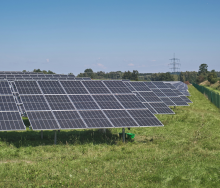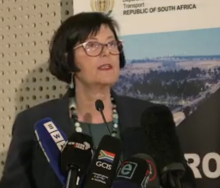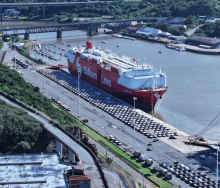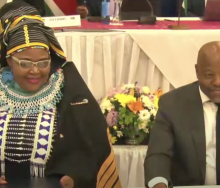In case you were wondering – along with most of South Africa – why President Cyril Ramaphosa has further bloated his cabinet by appointing a minister of electricity, Minister of Mineral Resources and Energy, Gwede Mantashe, spelt out the role of the new appointee when he addressed Parliament yesterday.
He said it had been characterised as a project management approach in dealing with a crisis.
“Some people in the media say, when we characterise it as project management, we are reducing this ministry and its authority,” he said.
“I think something called school will help them understand that project management is not reductionist. It emphasises urgency of execution and delivery. In project management, one will have clear time frames, milestones, and a critical path which we must not deviate from. We don’t have the luxury of waiting for the 24 months to resolve load-shedding. If we derail from the identified critical path, we will derail the whole project. That is how serious the President takes this crisis.”
Mantashe criticised opposition parties for never wanting to be involved in finding solutions to any crisis. “They believe that opposition means opposing anything that is tabled by the ANC and its government.
“In January 2023, the DA pronounced that they would support the declaration of the state of disaster on the energy crisis. When the state of disaster was declared on the 9th of February 2023 by the president, the same DA pronounced that they will take the ANC government to court and oppose the declaration of the state of disaster. This means they are talking from both sides of their mouths. We can’t help that.”
Mantashe believes the crisis is solvable because government is taking action to address it in the short to medium term. Its interventions include:
- Improving Eskom’s Energy Availability Factor (EAF) through maintenance and servicing of existing power stations;
- Procurement of emergency or short-term power;
- Purchase of electricity from neighbouring countries;
- Improving skills capacity at Eskom.
The main focus is on improving the EAF of the following power stations:
- Tutuka (33.3% EAF)
- Kendal (45.5% EAF)
- Duvha (20.7% EAF)
- Majuba (44.3% EAF)
- Kusile (24.7% EAF)
- Matla (42.8% EAF)
“If all these stations could give us EAF of more than 50%, we would have resolved the better part of the electricity crisis.”
He said government was continuing to develop generation capacity for the long-term sustainability of energy security for the country.
“Honourable members are reminded that 2 205 MW of renewable energy was procured under Bid Window 4, of which 2 130 MW are connected to the grid and providing us with the much-needed capacity.
“2 583 MW have been procured under Bid Window 5, of which 1 759 MW are under construction. Under Bid Window 6, we procured 4 200 MW, of which 1000 MW have been contracted. 3 200 MW could not be contracted due to grid transmission constraints. We welcome the interventions by government which will ensure that Eskom makes the necessary investments in grid transmission, particularly in provinces such as the Northern Cape, Western Cape, and Eastern Cape.”
He said the Department of Mineral Resources and Energy would issue a request for proposal consisting of:
- 513 MW of battery storage by the end of February
- 3 000 MW of gas to power by the end of the current financial year
- Bid Window 7 of up to 5 000 MW subject to grid capacity availability.













